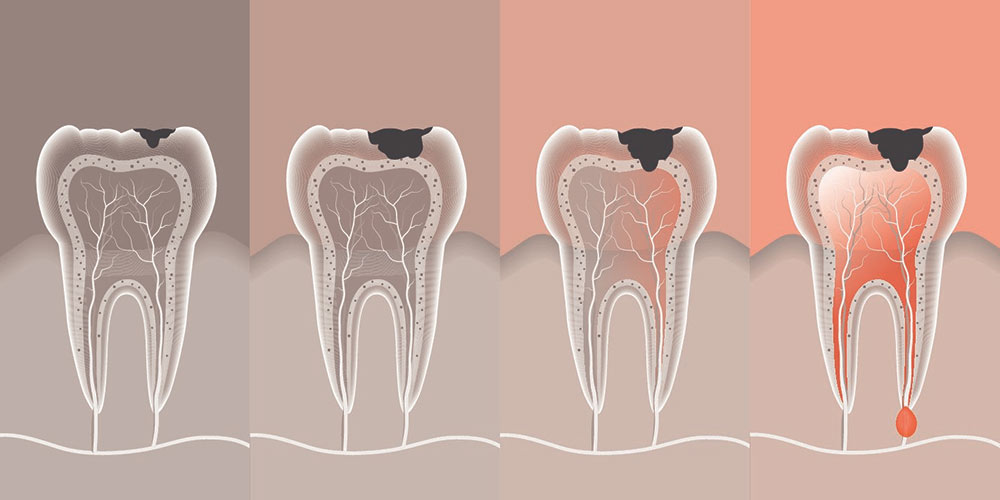Canal Treatment (Root Canal Treatment)
Canal treatment is performed when the dental pulp (nerve and vein tissue inside the tooth) is irreversibly damaged or infected due to deep cavities or trauma. During this procedure, the cavity tissue is cleaned, and the canals are shaped and filled under local anesthesia. The treatment may require multiple sessions depending on the severity of the infection at the root ends.
When is Canal Treatment Needed?
Canal treatment is necessary in the following cases:
- Cavities reach the dental nerve.
- Fractures expose the dental nerve due to trauma.
- Teeth lose vitality due to excessive force during orthodontic treatment.
- Advanced gingival diseases are present.
- Extreme abrasion leads to dental sensitivity.
How to Decide on Canal Treatment?
Indicators for canal treatment include:
- Tooth sensitivity to hot and cold that does not disappear quickly.
- Spontaneous pain during the day without any apparent cause.
- Pain during and after eating.
- Change in tooth color due to dead pulp.
- Swelling due to an abscess.
- Specific conditions such as cysts or the need to resize crowns.

How is Canal Treatment Performed?
- Anesthesia: Local anesthesia is applied to ensure a pain-free procedure.
- Cavity Cleaning: The cavity is cleaned or broken pieces are removed to access the nerves.
- Nerve Cleaning: The nerves and tissues in the root are cleaned.
- X-ray or Equipment Use: An X-ray or special equipment is used to determine the size of the root canal.
- Canal Shaping: The root canal is shaped to match the root end.
- Sessions: The number of sessions required depends on the condition of the tooth; one or several sessions may be necessary.
- Medical Dressing: Medical dressing is applied between sessions to promote healing of the inner root and root end.
- Final Stage: The canal is filled with a special material up to the root end.
- Post-Treatment: Patients typically do not experience pain during the treatment due to anesthesia. Mild pain and sensitivity during chewing may occur post-treatment, which usually subsides within 15 days. Painkillers may be used for a few days after the treatment.

Difference Between Canal Filling and Dental Filling
In canal filling, the root canal is cleaned and filled to address issues within the tooth's root. In contrast, dental filling restores the visible part of the tooth (crown) using composite materials or crowns, depending on the extent of damage.
Vulnerability After Root Canal Treatment
After canal treatment, the tooth loses its vitality and becomes more vulnerable over time. Crowns are often recommended following treatment to protect the tooth, as it loses tissue and becomes more fragile.
Necessity for Tooth Extraction Due to Dental Inflammation
Today, most abscesses at the root end can be treated with various materials and techniques, making extraction unnecessary. Tooth extraction is considered only when the infection cannot be controlled or when the tooth and jaw relationship is severely compromised.
Renewal of Root Canal Treatment
The success rate of canal treatment is 90–95% when performed correctly in a sterile environment. However, treatment can fail if microorganisms infiltrate the canal due to inadequate enlargement or shaping, poor root canal or upper filling, or if perforations or fractures occur during the procedure. Signs of failure include pain during chewing, spontaneous pain, and persistent abscesses at the root end. In such cases, the canal treatment may need to be renewed. If renewal fails, an apical resection may be performed to surgically clean the infection. If neither renewal nor surgical intervention is successful, tooth extraction may be necessary.






